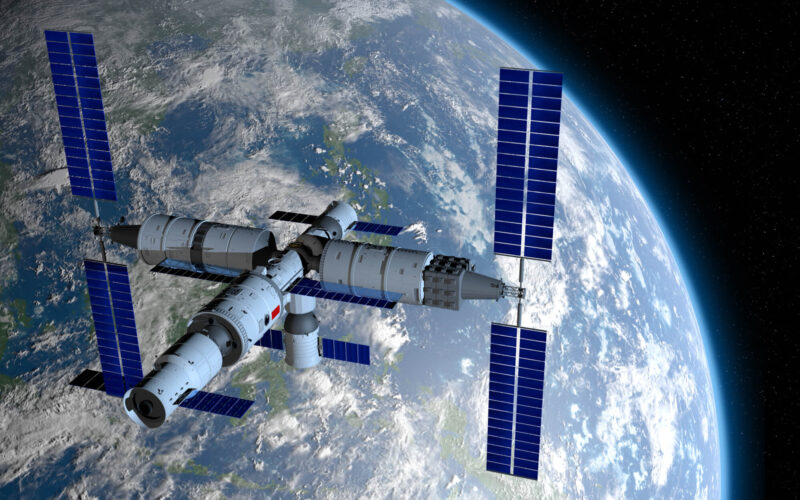The first of three elements of the future Chinese space station was launched on April 29, 2021. The central module, which will be the habitable space of the taikonauts and the station’s control center, was propelled by a Long-March 5B rocket from the Wenchang launch center on the tropical island of Hainan, southern China.
Named Tiangong (“Heavenly Palace”), the Chinese space station (CSS) will be a third of the size of the International Space Station (ISS). A second launch is expected in May 2021, and the first manned station will take place a month later. The CSS is planned to be fully operational by 2022.
While it will be mainly inhabited and operated by China, the authorities said they were opened to international cooperation. The United Nations Office for Outer Space Affairs (UNOOSA) is already studying the range of experiments that could be carried out onboard the CSS, especially by developing countries.
As the ISS that has been orbiting the Earth since 1998 is due to be retired after 2024, the CSS could very well be the only space station on orbit past that date. China was excluded from the ISS program which regroups Russia, the US, Canada, Europe, and Japan, over concerns that the cooperation would be used to improve its own military programs.
Since it sent its first astronaut into orbit in 2003, China has been heavily investing in its space program in order to catch up with other global powers. In 2019, a Chinese rover was sent on the far side of the moon, a historical first. Another rover should be landing on Mars in May 2021. In March 2021, the Chinese space agency announced its plan to build a lunar base, in cooperation with Russia.

